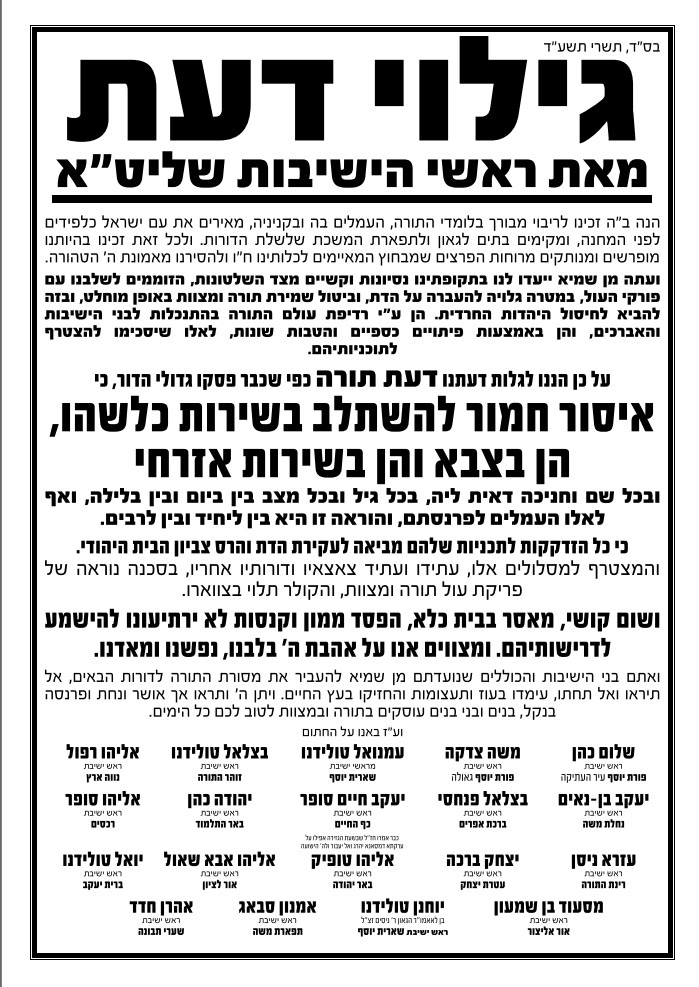Happy 100th Birthday Daas Torah!

There has always been a concept of rabbinic authority in Judaism. But the modern phenomenon of Daas Torah goes far beyond the traditional model. It extends the authority of certain rabbis into political and other worldly affairs, and it does so in inverse proportion to their experience with worldly affairs - i.e. the more that the person has been isolated from the world, the more he is said to reflect a pure Torah perspective. Furthermore, unlike classical rabbinic authority, which was expressed in terms of responsa that could be evaluated, modern Daas Torah is usually presented with no rigorous explanation or justification. Indeed, the very concept of presenting a rationale for its verdicts is often argued to be inappropriate. Modern Daas Torah also seeks to extend its authority beyond the natural communities of its various figures to the entire Jewish people.
When did the modern phenomenon of Daas Torah arise, and what lay behind its emergence? The concept of Daas Torah was first informally introduced in Hassidic circles in the late nineteenth century, as a technique to reaffirm rabbinic authority in light of the modern challenge of individual autonomy. A good date to mark the official appearance of Daas Torah in the world of Misnagdim appears to be June 19th, 1914. This is the day that Agudas Yisrael, then in the process of being formed, published certain resolutions that had been adopted.
The manifesto shows that Agudas Yisrael accepted two proposals insisted upon by the Hasidic rebbes as a precondition to joining the organization. One was that the verdicts of the Torah sages would be given without having to provide any justifications. Another was a considerable extension of the authority of the Council of Sages as against the lay leadership, to go beyond halachic questions.
It could be claimed that Daas Torah was adopted in order to ensure that the chassidic world would join and strengthen Agudas Yisrael. But it is also argued that the concept of Daas Torah had to be developed in order to justify the very existence of Agudas Yisrael, which was a modern political structure, and, perhaps more importantly, to render it superior to other Jewish organizations—in particular, Zionism and Mizrahi. Others suggest that the strengthening of the role of rabbis in non-Torah decisions at that time may have been a reaction to the Zionist approach of restricting rabbinic authority to laws of kashrut and similar such narrow provinces.
Whatever the cause, the modern Daas Torah phenomenon has certainly had a powerful impact. In the last ten years, however, it has been seriously threatened by the emergence of the internet. The internet enables people to give voice to their challenges of its pronouncements - and to their challenges of its very claim to be the traditional model of rabbinic authority. It will be interesting to see where the modern phenomenon of "Daas Torah" goes in its second century.
Further Reading:
The Making of Haredim
Rav Aharon Lichtenstein: The "Da'as" in Da'as Torah
Gershon Bacon: The Politics of Tradition: Agudat Yisrael in Poland, 1916-1939
Lawrence Kaplan: Daas Torah, A Modern Conception of Rabbinic Authority
Interview with Professor Lawrence Kaplan
* * *
Amidst everything we do, we say Hashem, please help our soldiers bring our boys back home.
(You can support the soldiers in a practical way here.)


